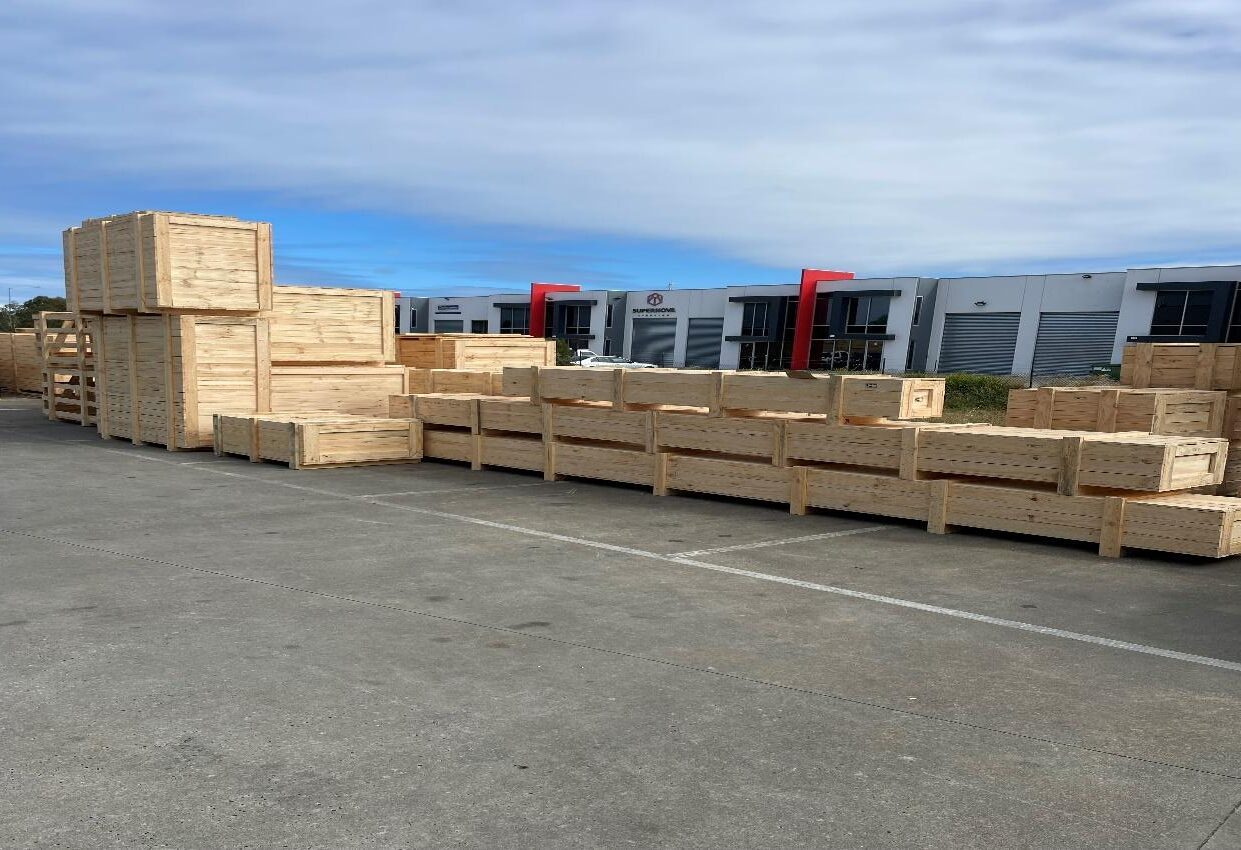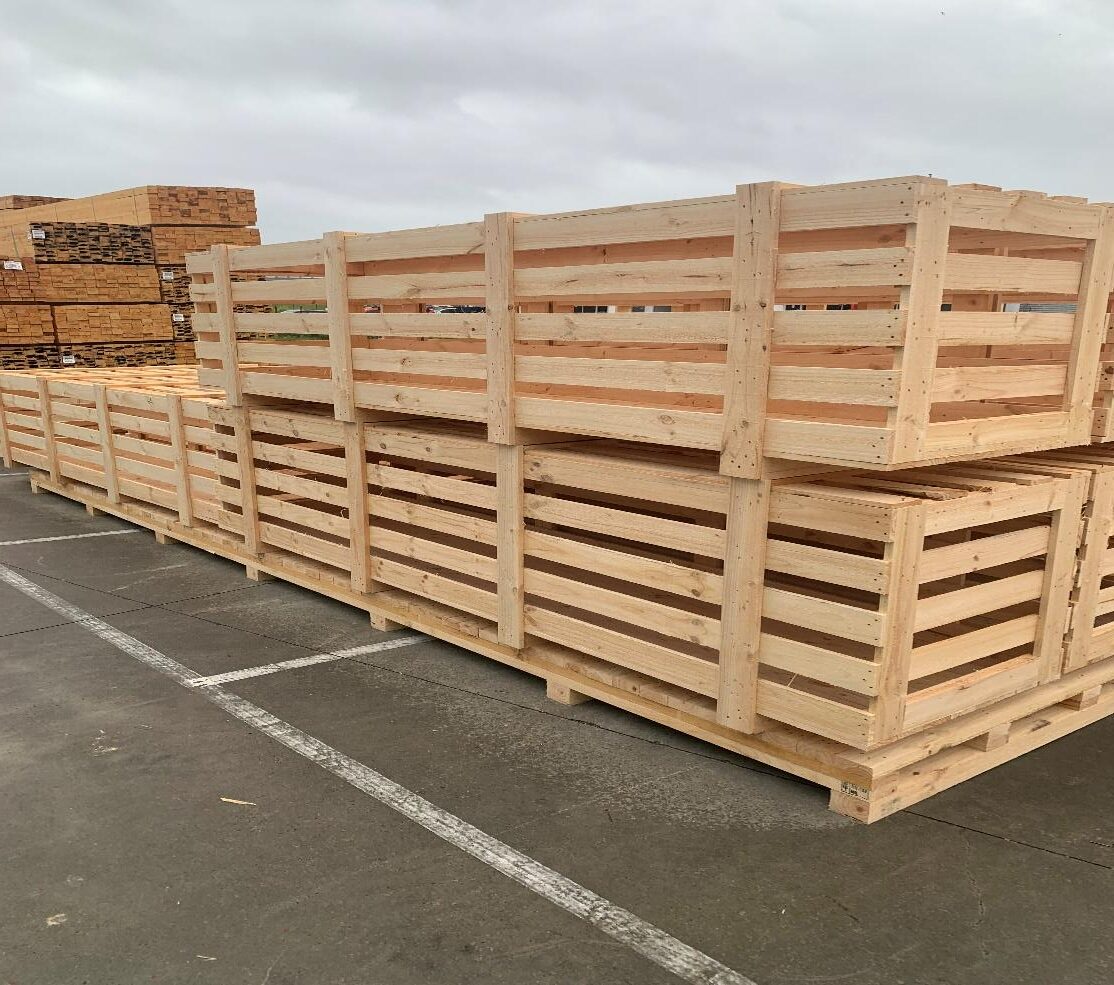How To Choose The Correct Wooden Case Size
The landscape of the shipping industry is continually adapting to accommodate the growing demands of consumers and businesses. In fact, the global shipping industry is projected to reach a market value of USD$10.93 billion by 2025, with an increasing focus on eco-friendly packaging materials and practices. This shift emphasises the need for versatile, durable, and sustainable shipping solutions to keep up with the expanding market.
Wooden cases are a popular choice for storage and shipping due to their durability, strength, and aesthetic appeal. They come in various sizes, from small wooden cases to large and extra-large wooden cases. Selecting the right size can make a big difference in terms of functionality and cost efficiency. This guide will help you choose the perfect wooden case size for your needs, whether you’re looking for custom shipping boxes or standard options.

- Assess Your Needs Before you begin searching for the ideal wooden case size, consider what you’ll be using the case for. Are you storing or shipping delicate items, heavy equipment, or bulk goods? The purpose of the case will help determine the dimensions and strength required. Make a list of the items you plan to store or ship, along with their individual dimensions and weights.
- Understand Standard Sizes
Wooden cases come in various standard sizes. Small wooden cases are perfect for storing or shipping smaller, lightweight items, while large and extra-large wooden cases can handle heavier, bulkier goods. Familiarise yourself with the common dimensions for these sizes to serve as a starting point in your search:
- Small wooden cases: Up to 12″ x 12″ x 12″
- Large wooden cases: 18″ x 18″ x 18″ to 24″ x 24″ x 24″
- Extra-large wooden cases: 30″ x 30″ x 30″ and above
Remember that these dimensions are approximate and can vary between manufacturers. Work with a trusted timber cases Melbourne supplier to get exactly what you need.
- Measure Your Items
To determine the ideal wooden case size, you must accurately measure your items. When measuring, take into account the following three dimensions:
- Length: Measure the longest side of the item.
- Width: Measure the side perpendicular to the length.
- Height: Measure the side perpendicular to both length and width.
For shipping box dimensions, add at least 2 inches to each dimension to account for packing material, which will protect your items during transit.
When measuring items with irregular shapes or protrusions, measure at the widest points to ensure that the wooden case can accommodate the entire item. It’s also a good idea to measure all items together if you plan to store or ship multiple items in a single case. Allow for adequate space between items to prevent damage during transit or storage.
- Consider Weight Limitations

Wooden cases have varying weight capacities, depending on their size and construction. Ensure that the case you choose can safely accommodate the weight of your items. Consult the manufacturer’s weight guidelines and choose a case with a higher capacity if your items are particularly heavy.
- Factor In Shipping Costs Shipping costs can be influenced by both the dimensions and weight of your wooden case. Larger cases may incur higher shipping fees, while lighter cases may be more cost-effective. When selecting a case size, balance the shipping cost with the protection and functionality it offers.
- Customisation and branding options
In some cases, standard wooden case sizes may not meet your requirements. Custom shipping boxes provide an excellent solution for items with unique dimensions or weight requirements. Many manufacturers offer customisation options, allowing you to tailor your wooden case to the exact specifications needed.
One advantage of choosing wooden cases is the ability to customise their appearance and incorporate your branding. Here are some popular customisation options to consider:
- Staining and finishing: Wooden cases can be stained or finished in various colours and styles, allowing you to achieve a specific look that matches your brand or personal preferences.
- Engraving and printing: Logos, text, and other designs can be engraved or printed onto wooden cases to enhance brand recognition and create a more polished presentation.
- Hardware and accessories: Customise the hardware and accessories on your wooden case, such as handles, latches, and hinges, to create a unique and functional design.
- Foam inserts and dividers: For added protection and organisation, consider adding custom foam inserts or dividers to your wooden case. This is especially useful for fragile or delicate items that require extra cushioning and support.
Work closely with your manufacturer to get the customisations on point, especially around important branding elements like your logo, brand name, and other details.
- Choose The Right Material

While wooden cases are known for their durability and strength, there are different types of wood that you can choose from, each with its own benefits and drawbacks. Some common materials used for wooden cases include plywood, hardwood, and softwood.
- Plywood: Plywood is an affordable and versatile option, made by gluing layers of wood veneer together. It offers a good balance of strength, weight, and cost. However, it may not be as visually appealing as hardwood.
- Hardwood: Cases made from hardwoods such as oak, maple, or walnut are robust and have a high weight capacity. They are also aesthetically pleasing, which can be an important factor for presentation purposes. However, hardwood cases can be more expensive and heavier than other options.
- Softwood: Softwood cases, made from wood like pine or cedar, are lighter and more affordable than hardwood cases. They may be suitable for lighter items but may not provide the same level of durability and protection as hardwood or plywood.
Consider the specific needs of your items and your budget when selecting the material for your wooden case.
- Environmental considerations
As you choose a wooden case size, it’s essential to consider the environmental impact of your decision. Wooden cases are generally more eco-friendly than plastic or metal alternatives, as they are made from renewable resources and are biodegradable. However, there are still factors to keep in mind:
- Sustainable Sourcing: Look for wooden cases made from sustainably sourced wood, ensuring that the materials come from responsibly managed forests.
- Reusability: Choose a durable and well-constructed case that can be reused multiple times, reducing waste and promoting sustainability.
- Recycling and Disposal: When a wooden case reaches the end of its useful life, consider recycling or repurposing the materials rather than sending them to a landfill.
Taking environmental considerations into account when choosing the right wooden case size not only helps reduce your ecological footprint but also promotes a more sustainable and responsible approach to storage and shipping solutions.
Conclusion:
Selecting the right wooden case size is a crucial step in ensuring your items are stored and shipped safely and efficiently. Take the time to assess your needs, measure your items, and explore both standard and custom options. By considering factors such as shipping costs, weight limitations, and aesthetics, you can find the perfect wooden case to suit your unique requirements.




